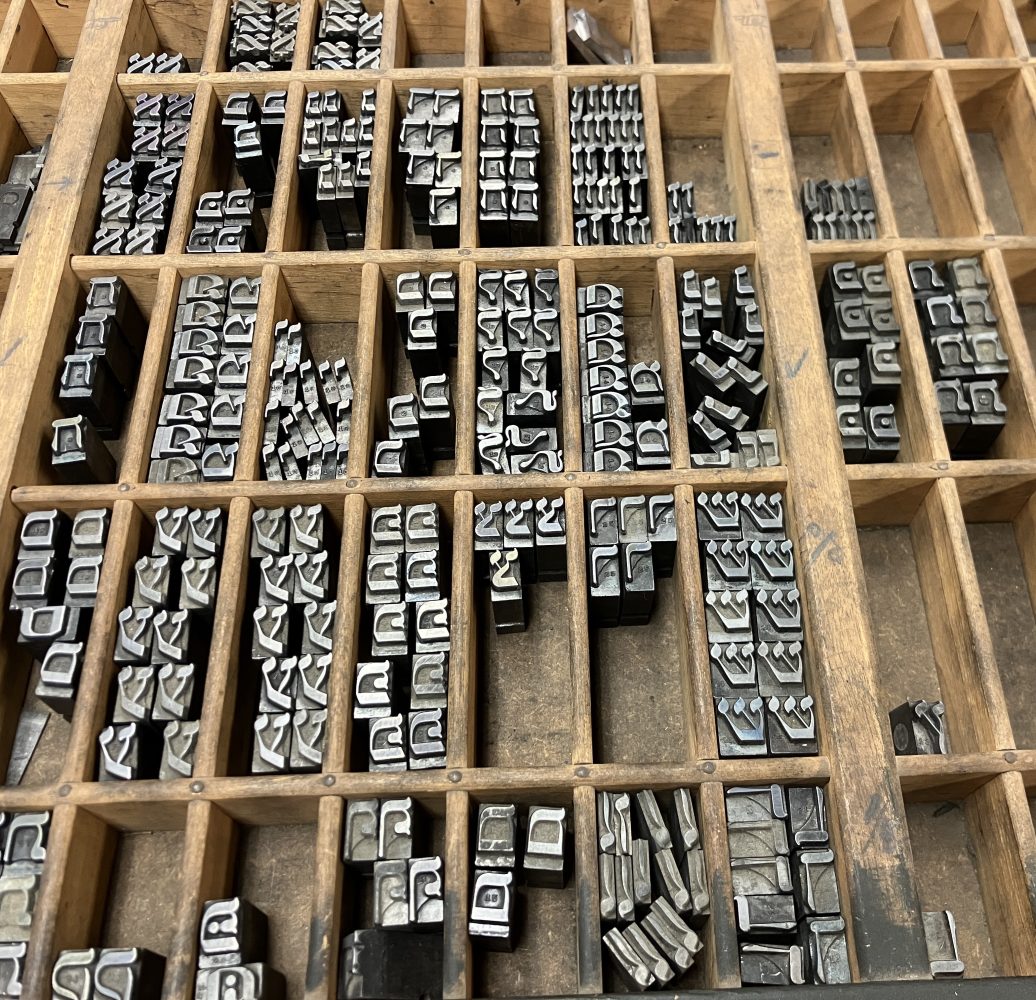

Join the Upper Midwest Jewish Archives on April 10, 2024 for the first day of the interdisciplinary symposium, “Letters That Link Us: Histories and Mysteries of Hebrew Type An Interdisciplinary Symposium.” All who are interested in Hebrew-character printing — including also Jewish vernaculars like Yiddish, Ladino, and Judeo-Arabic — are invited to attend two days of collaborative, multi-disciplinary, interactive learning. The second day of the symposium takes place at the Minnesota Center for Book Arts on April 11, 9 a.m. to 6:45 p.m.
All events are free and open to the public. Advanced registration is required to plan for adequate catering and proper set up. (Register by March 31 to ensure a boxed lunch is available for you.)
Register for Letters That Link UsOver the last five centuries, Hebrew-character printing — not limited to texts in the Hebrew language, but including vernaculars like Yiddish, Ladino, and Judeo-Arabic — has evolved in every area where Jewish communities were (and are) found, in some places appearing only briefly and in others, leaving a lasting legacy; its practitioners have ranged from the famous to the unknown. Furthermore, Hebrew-character printing often involved a diverse mixture of Jewish and non-Jewish designers, punch-cutters and type-casters, editors, typesetters, correctors, press workers, and other print professionals.
Though much is known about the printing of the most famous of Jewish books and the people who printed them — from the Bible and Talmud to modern Hebrew and Yiddish literature — there are still many puzzles associated with the Hebrew typefaces themselves: who designed them, who manufactured them, and how were they maintained? How was Hebrew printing shaped by collaborations, conflicts, and contacts across religious, ethnic, and linguistic boundaries?
Today, Hebrew type is still being made, collected, and used by book artists and letterpress printers around the world. What are the challenges and joys of working with Hebrew type today in all its forms, wood and metal, vintage and newly-cast? How can the history of Hebrew typography inspire creativity in contemporary book arts?
Noam Sienna is a scholar and book artist living in South Minneapolis. He received his PhD in Jewish History and Museum Studies from the University of Minnesota, focusing on early modern Jewish book history; he is currently a postdoctoral research scholar with the University of Toronto’s project “Hidden Stories: New Approaches to the Local and Global History of the Book,” and a Junior Fellow with the Mellon Society of Fellows in Critical Bibliography. He is also a Hebrew calligrapher and letterpress printer, with work exhibited at the Sabes Jewish Community Center, the Robertson Davies Library of Massey College, and the Minnesota Center for Book Arts.
Robyn Awend is an arts advocate, multi-media artist, and community builder. Her background in fine arts and curation has led her work in the Twin Cities arts community for the past eighteen years. Robyn’s artwork often uses Hebrew words and word fragments to inspire her letterpress prints and interactive installations, exploring identity through various cultural and societal influences. Awend is a founding member of Form+Content Gallery in Minneapolis, and is currently serving as a Fellow for the newly commissioned Hebrew wood type collection at the Minnesota Center for Book Arts. She holds a BFA from the University of Arizona and an MFA from the University of Dallas.
Hosted by the Andrew W. Mellon Society of Fellows in Critical Bibliography at Rare Book School, in conjunction with the University of Minnesota Center for Jewish Studies, Center for Premodern Studies, the University Libraries; and the Minnesota Center for Book Arts. This symposium is additionally supported by Rimon: The Minnesota Jewish Arts Council through the Oren & Sharron Steinfeldt Foundation.
What: Letters That Link Us: Histories and Mysteries of Hebrew Type An Interdisciplinary Symposium
When: Wednesday, April 10 | 9 a.m. to 6:45 p.m.
Where: Elmer L. Andersen Library | Parking and directions
© 2025 Regents of the University of Minnesota. All rights reserved. The University of Minnesota is an equal opportunity educator and employer.
Report Web Accessibility Issues | Privacy Statement | Acceptable Use of IT Resources
Notifications